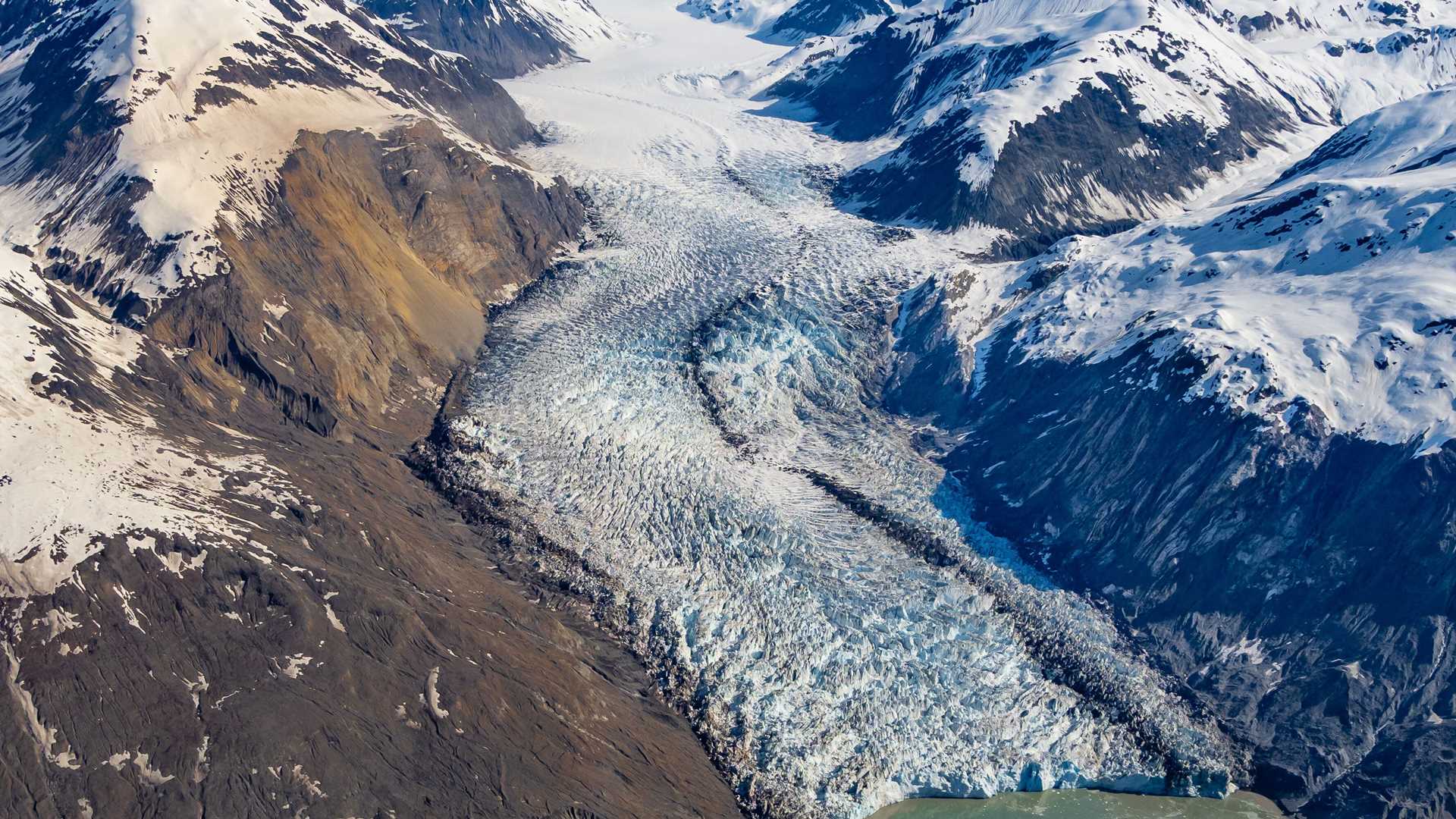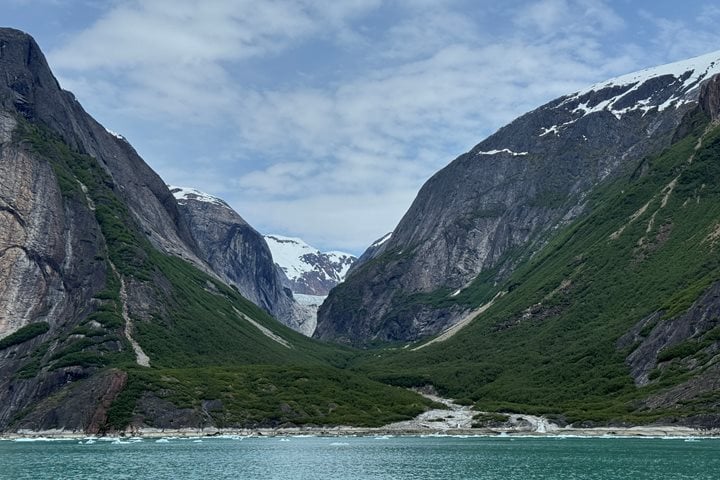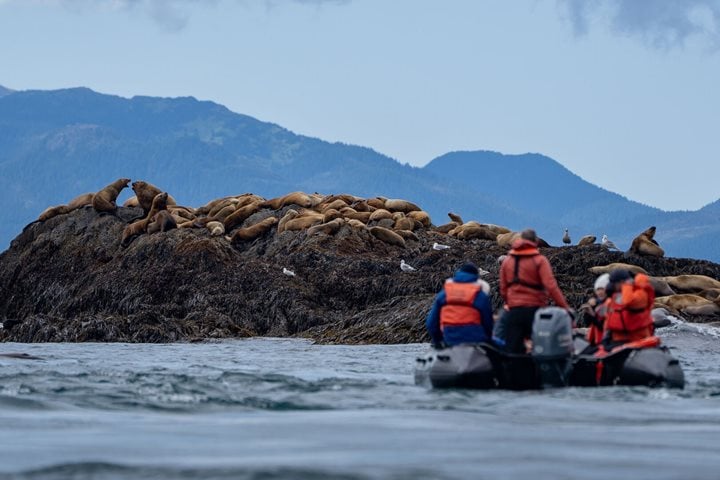Smooth sailing from the Inian and George Islands brought National Geographic Sea Bird up Lynn Canal to Haines, Alaska. The Lynn Canal is the longest fjord on the planet, and Haines is known as the adventure capital of Alaska. And, indeed, it is a land of superlatives. Huge snowcapped mountains line the fjord traveling to and from Haines. Rainforest clad slopes rise immediately from the water. Nestled between the glacially fed Chilkoot and Chilkat Rivers is the town of Haines.
Incidentally, both rivers were part of the adventures upon which guests embarked today. Everyone was offered various activities for the day–one for the morning and one for the afternoon. Some folks chose to float the Chilkat River from Klukwan Village to the take out spot where lunch was served on the banks of the beautiful river. Some folks chose to bike up the gentle hill following alongside the Chilkoot River. This river is a known salmon river and, therefore, a place for bears to visit when the salmon run. We’re a little early in the season for salmon to be running, but the beauty of the rainforest at the end of this ride—and Chilkoot Lake—is present year-round. And the lake itself is a most wonderful final destination for this bike ride. Of course, the return to town is a pleasant downhill journey.
While some folks were rafting and cycling, others were hiking and flying. Two hikes were offered: one challenging hike with a 1600-foot elevation gain and the other a more casual stroll along the beach. The beach hike provided opportunities to gaze at the scenery of Lynn Canal, an abundance of coastal vegetation, and a chance to just stroll along the majesty of this region. The more challenging hike ascended Mt Riley, climbing from thick, lush rainforest with large Sitka spruces and hemlocks up to a harsher environment where trees are shrunken due to the short growing season and robust storms that occur at that elevation. These shortened trees are known as ‘krumholtz’ and only occur in these harsher, typically higher locations. Before reaching the summit, folks passed through a high elevation bog that hosts a completely different suite of vegetation than a forest could support.
And, of course, most folks chose one of the numerous slots to soar above the mountains and amongst the glaciers in a small six-seater plane. This flightseeing option lasted about an hour and took guests on a journey comparable to none. I have been fortunate to go ‘flightseeing,’ as it is called, on several occasions. Every time, I am simply blown away by the incredible landscapes of the alpine environment. This is a most appropriately timed excursion as last night I presented on the glacial landscape and how glaciers impact southeast Alaska. Flightseeing today is a real opportunity to put that newfound knowledge into a practical application.
As one could imagine, the evening appetizer hour was abuzz with excitement and stories of what everyone did and experienced. It is a pleasure to see this energy on the ships: Newly formed friends sharing stories of their days with such fervor and enthusiasm. It’s one of the reasons we naturalists love this work. It gives us an opportunity to share these incredible places with others and provides an opportunity for people to develop their understanding of this precious globe upon which we all reside: a true gift!
Photo caption and photographer: One of several incredible glaciers observed during flightseeing. Photo by David Jaffe







